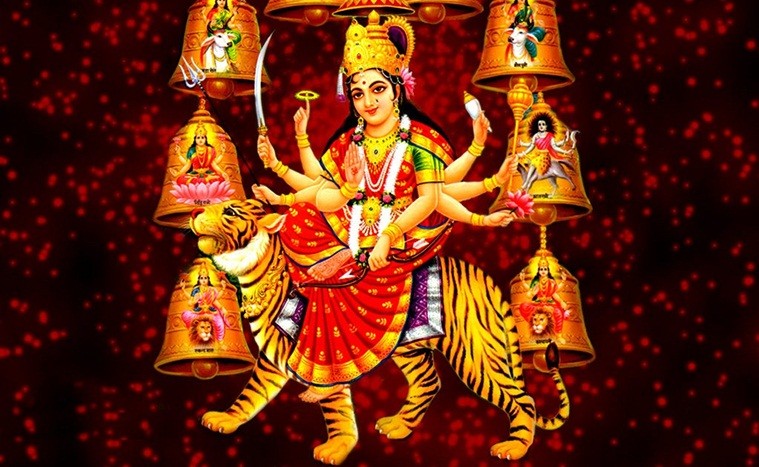India is a country of diverse cultures and beliefs. With over 35 languages in vogue and 29 states the country is true representation of unity in diversity and none other than Navaratri will be clear depiction of this concept.
All the festivals are not celebrated by everyone in the country. And there are few festivals that are celebrated across the country, but in similar fashion. For example Diwali, everyone fires crackers; for Holi everyone plays with colours. It is not the case with Navaratri. Each region has its own and unique system as well as custom to celebrate with wonderful festival.
Religion World looks at different regions in the country and their very unique way in celebrating Navaratri.
In West Bengal, Assam and Bihar

Saptami, Ashthami, Navami and Dashami—the last four days of Navratri are celebrated as Durga Puja in the eastern parts of the country. Durga Puja is the most popular festival in West Bengal, Assam and Bihar, and is celebrated with great pomp. The festival celebrates the victory of Goddess Durga over the evil buffalo demon Mahishasura.
Kolktta’s Beautiful Durga Idols and Pandals
In Gujarat

The sounds of dandiya sticks and dhol can be heard all over Gujarat during the first nine days of the month of Ashvin. Devotees observe fast and worship Maa Shakti. In the evening, a garbi, an earthen pot with diyas symbolizing the source of life, is used for the evening aarti after which traditional dances, garba and dandiya are performed both by men and women. The western state of Gujarat is where Navratri is celebrated in a big way. And it is this version of the celebrations that has seeped into popular culture.
The growing popularity of “Silent Garba”
In Tamil Nadu

Just like other states, Tamil Nadu has its unique way of celebrating these nine days. During Navratri, they worship the goddesses Durga, Saraswati and Laxmi. Three days are dedicated to each of them. In the evenings, relatives are invited over to the house and gifts are exchanged. Married women are given chudiya (bangles), bindi and other ornaments. The most fascinating ritual is Kolu, where a makeshift staircase is decorated with dolls which are said to be passed on from generation to generation.
Navratri : Bommai Golu – South Indian Celebration
In Punjab

Most Punjabis fast for the first seven days of the Navratri, honouring of all the reincarnated forms of Maa Shakti. Every night, jagrans take place, where devotees gather to sing religious songs. On the Ashtami or the Navami, fasts are broken by inviting nine young girls from the neighbourhood, who are honoured with gifts including money, food etc. These girls, known as ‘kanjak’, are considered to be representations of the nine different avatars (forms) of Maa Shakti.
In Telangana

During the nine days of Navratri, the people of Telangana celebrate Bathukamma Panduga, nine days dedicated to Maha Gauri, the goddess representing womanhood. During this time, women make flower stacks in the traditional style with local flowers and perform a puja. At the end of Navratri, this stack is then set afloat on a lake or any other water body.
Batukmma : Telangaan’s Navaratri – Significance and Rituals
In Kerala

In Kerala, Navratri is associated with education. As this festival marks the victory of good over evil, Keralites consider these days as the most auspicious for learning or starting something new. During the last three days, they worship Goddess Saraswati and place books next to her statue in their homes.
How Kerala Celebrates the 10-day long harvest festival
In Karnataka

Navratri in Karnataka is known as Nadahabba and is celebrated in the same way that it was way back in 1610 by the great Vijayanagara dynasty. Vijayadashami, the tenth day of Navratri, marks the victory of the good over the evil when Goddess Shakti fought and killed the demon Mahishasura on this day. Ironically, the state of Mysore was named after Mahishasura. On dashami, people march elephants on the streets and exhibitions and fairs are held all over the state.
Mysore Dussera : ” All Roads Lead to Mysore Dussera”
In Maharashtra

For Maharashtrians, Navratri symbolizes new beginnings, hence this is considered the best time for buying property or making business deals. Married women invite their married friends over; they apply haldi and kumkum on their forehead and exchange gifts. Just like Gujarat, each of these nine nights is garba and dandiya night for Maharashtrians.
Navratri Special : Ashtadasa Shakthi Peetham – Mahalakshmi Devi, Kolhapur
In Himachal Pradesh

Navatri celebrations in Himachal Pradesh take place on the tenth day of the Navratri. Unlike the rest of the states, the celebrations in Himachal Pradesh starts when it ends for others. It’s known as Kullu Dussehra marking the return of Load Rama to Ayodhya. During the nine days of Navratri, local Hindu families have get-togethers and show their respect to Goddess Durga.
In Delhi

But for most part, Navratri celebrations in Delhi are marked by Ramlila performances. These stage shows are grand and spectacular and narrate select episodes from the life of Rama. Most Ramlila shows draw to a close on Dashmi or Dussehra when effigies of Ravana are burnt.
Delhi Most Advanced Sound and Light Ramlila









